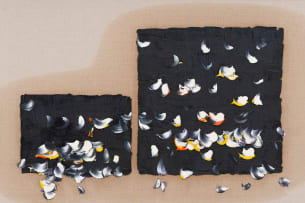Evening Sale
Live Virtual Auction, 28 May 2024
Evening Sale
Incl. Buyer's Premium & VAT
About this Item
signed, dated Xmas Day '06/07, and inscribed with the title and 'The artist's private collection' on the reverse
Notes
The title of this painting invokes an entire tradition of western figure painting involving the female nude that extends from Titian to contemporary painters like John Currin and Neil Rodger. The recovery of Greco-Rom an antiquity during the Italian Renaissance saw nymphs - youthful, long-lived and sexualised female divinities of Greek mythology - emerge as a distinct figural type in painting and sculpture. In their purity and chasteness, nymphs came to embody a particular understanding or ideology of classical beauty.
The Italian master Titian especially is celebrated for his fleshy portrayals of nymphs produced late in his career, circa the 1570s, when he was in his 80s. Like Titian, Hodgins was well into his 80s when he produced this ambiguous take on the nymph. Depicted frontally in a rudimentary interior, a setup typical of late Hodgins, his female subject is sketchily delineated. She is, at most, a summary of a woman, more line and colour than flesh and intrigue. Is this Hodgins flipping the bird at the western canon? The answer is not entirely straightforward.
In an appreciation of late Titian, critic John Berger writes, 'he is the first European to display - rather than hide or disguise - his manual gestures when putting pigment onto the canvas. Thus he makes painting physically confident in a new way.'1 The same is broadly true of Hodgins the painter. Besides being an artist, Hodgins was also a teacher and accomplished art critic. He admiringly spoke of Titian. 'Oil paint since Titian has become such a seductive, argumentative, interesting, flexible, versatile medium,' stated Hodgins in 1994.2 Hodgins endlessly rehearsed this faith in his oil compositions of the 1990s and 2000s. While his forms in this work may appear crude, mocking even, the bold physicality of his painting operates as a counterbalance. The result is a painting that is able to encompass homage and argument.
1John Berger (2017) Portraits: John Berger on Artists, London, Verso. Page 68
2 Ivor Powell (1995) At the Scene of the Crime: An Interview with Robert Hodgins', Ventilator, Johannesburg, No. 1 September. Page 46
Asked about the easy confusion between carefully calibrated disorder and bad painting, Hodgins remarked: 'There's a sense that there are limits which shouldn't be transgressed [in painting].'1 He conceded that those boundaries are negotiable - 'when one saw one's first de Kooning or one's first Pollock, it looked an absolute mess'.2 He cited Guston's move from 'well-mannered painting' to a crude, cartoon-influenced style as influential. Guston, it turns out, like Hodgins, found his mature style through a close study of Renaissance figuration. Fittingly, Hodgins included a lamp fitting quoting Guston in another of his studies, Michelangelo no.2.
1 Ivor Powell (1984) 'One of my own fragments: An interview with Robert Hodgins', De Arte, No. 31, September. Page 38
2 Ibid., pages 39 and 41
Exhibited
Strauss & Co, Johannesburg, Social Stances: George Pemba and Robert Hodgins, 1 to 30 July 2021.
Literature
Strauss & Co (2021) Social Stances: George Pemba and Robert Hodgins, 1 to 30 July 2021, Johannesburg, illustrated in colour on page 24.
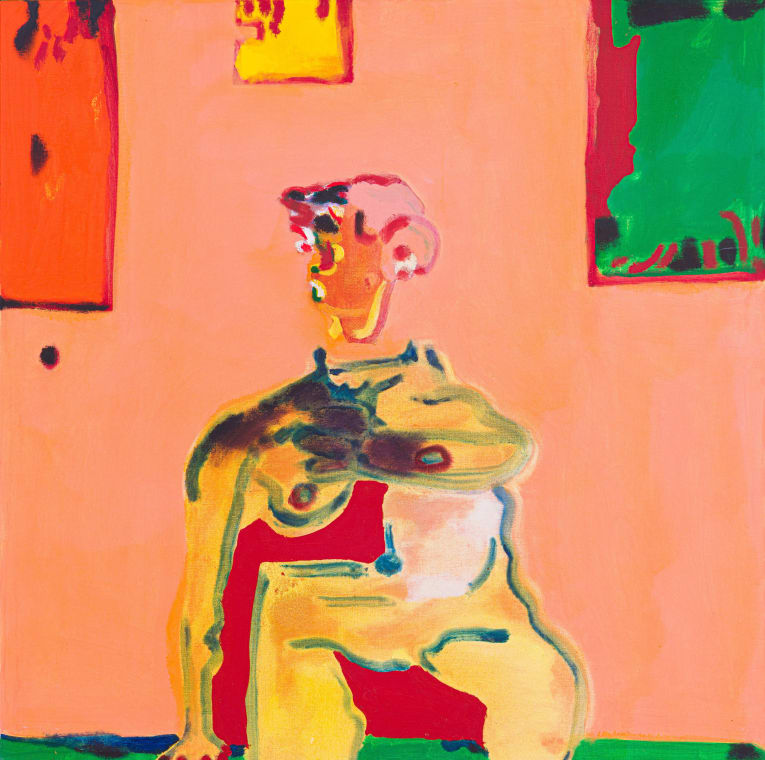

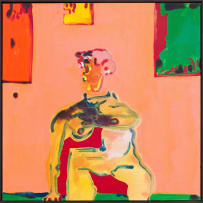

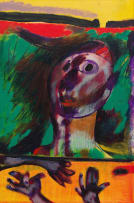

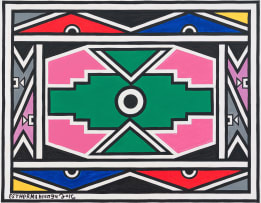

![Alfred Thoba; Good Married People in the House Got Their Own Pleice [sic] for Their Own Personal Matter](https://assets.straussart.co.za/t_thumb/items/0832/083233/alfred-thoba-good-married-people-in-the-house-got-their-own-pleice-for-their-own-personal-sbgqb6.jpg)
